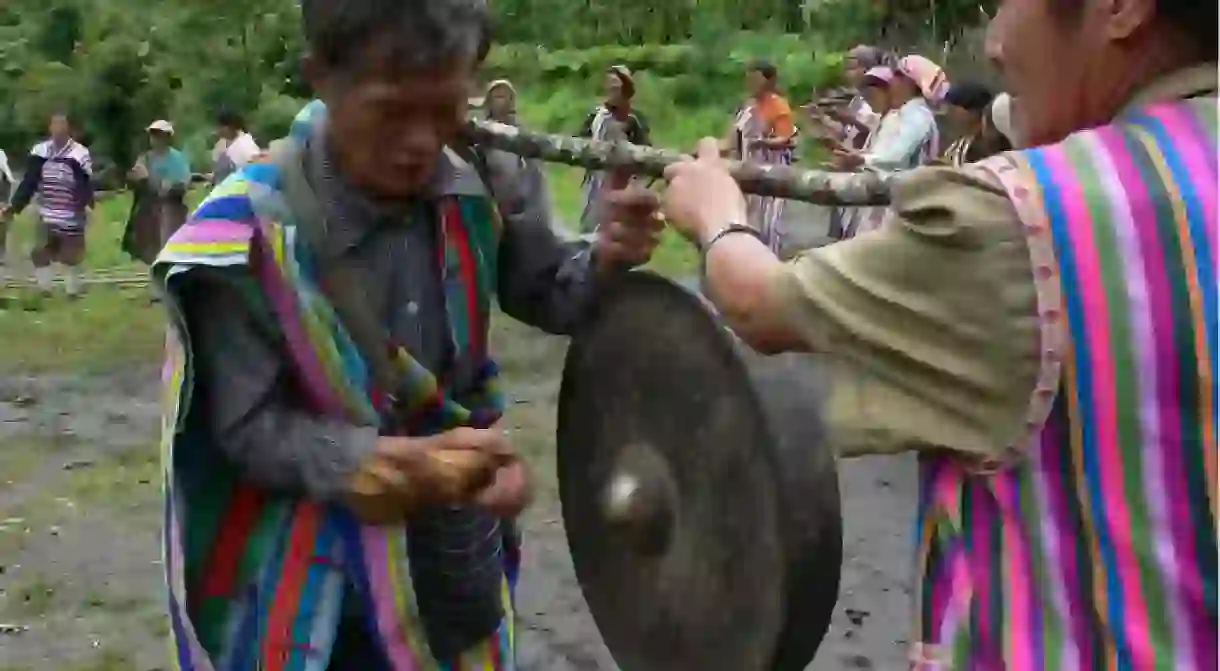An Introduction to China's Derung People

With around 7,000 members, the Derung, or Dulong, are one of China’s smallest ethnic groups recognized by the government. Though their lives have changed slightly within the last hundred years, many continue to live very isolated and traditional existences.
Homeland
Most Derung live along the banks of the Dulong River in the Gongshan Derung and Nu Autonomous County of northwestern Yunnan. Closed in on both sides by mountains, the Derung’s homeland is one of the most remote in China. Before the first major road was built to their region in 1999, it took three days to reach by foot from the nearest town of Gongshan.
Due to such isolation, the Derung have remained relatively uninfluenced by outside culture. Despite pressure from the Chinese government to modernize, most Derung continue to live the same lifestyle that their ancestors did, namely practicing slash-and-burn agriculture in addition to hunting and gathering.

History
Because the Derung have managed to live a remote life for most of their existence, very little is known about their early history. In fact, the Derung have no written language with which to record their history themselves. Thus, all that is known about them comes from outside sources.
It is possible that the Derung are the indigenous people of the Dulong River Valley, though this is mostly speculation from experts. The earliest that their history can be traced is the 8th century, at which time the powerful Nanzhao Kingdom was established in Dali, Yunnan, bringing much of Yunnan under its control.
Throughout imperial China, the Derung fell under the control of various leaders. From the Yuan dynasty to the Qing, the Derung were part of the Tusi, or “chieftains” system, in which hereditary tribal leaders were appointed by the imperial court to rule locally on behalf of the central government. This system saw the Derung paying imperial tribute primarily to the Yi people centered around Lijiang.
In the last two hundred years, the Derung became pawns of both the Tibetans and the Lisu, who had moved in on Derung territory. Though the Lisu themselves hardly had it easier, they took any opportunity they could to dominate the Derung, even taking some of them as slaves. The Tibetans on the other hand were far kinder, and the Derung found in them protectors, allies, and even trade partners.
After the establishment of the People’s Republic of China in 1949, the Derung were pressured to abandon cultural aspects that the Communists viewed as primitive. However, in the face of so many adversaries, the Derung remained largely true to their traditions.

Culture
One aspect of Derung culture that the new Communist government pushed hard against was the ritual tattooing of women’s faces. Prior to 1949, it was customary for girls to get their faces tattooed once they reached the age of 12 or 13. The design of the tattoo indicated which clan they belonged to. Today, fewer than 28 tattooed Derung women remain, the youngest being a woman born in 1953.
The Derung were also encouraged to give up animal sacrifice, which they have in large part done.
Nearly every other aspect of traditional Derung culture remains, however, from their animistic faith to their colorful, striped flax-cloth clothing that functions as a garment during the day and a blanket during the night. Throughout the early 20th century, the Derung were visited by a string of Western missionaries who succeeded in converting some of them to Christianity. Still, animism holds an important place in Derung society, and shaman are still called upon during holidays.














